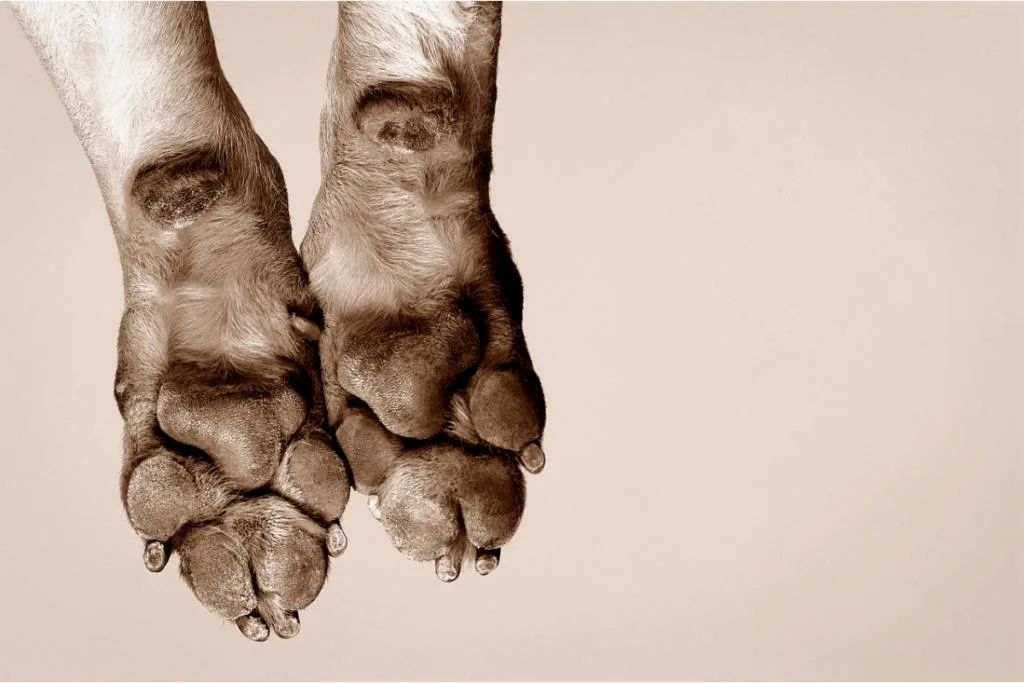Welcome to our informative article on dew claw removal in older puppies.
Deciding whether to have your puppy’s dew claws removed is an important decision that requires careful consideration. In this article, we will explore the benefits and drawbacks of this procedure to help you make an informed choice for your furry friend.
Dew claws are the small, often non-functional, extra claws located on the inner side of a dog’s leg.
Not all dogs have dew claws, but for those that do, they can serve various purposes.
Understanding the anatomy and function of dew claws is crucial in determining if removal is necessary.

Click Here to Jump to a Section
Key Takeaways:
- Deciding on dew claw removal requires careful consideration.
- Dew claws are small claws located on the inner side of a dog’s leg.
- Not all dogs have dew claws, and they can serve various purposes.
Understanding Dew Claws in Dogs
In this section, we will delve into the fascinating world of dew claws in dogs.
Dew claws are the small, extra toes found on the inner side of a dog’s leg, slightly above the paw.
Unlike the other toes, which are in direct contact with the ground, dew claws are positioned higher up and often do not touch the surface when the dog is standing or walking.
So, what is the purpose of these dew claws?
While they may seem insignificant, dew claws serve several essential functions.
One of their primary roles is to provide dogs with extra stability and grip during certain movements, such as climbing, jumping, and navigating rough terrains.
The anatomy of dew claws is noteworthy.
They are attached to the dog’s leg by a combination of bone, muscle, tendons, and ligaments.
Although dew claws vary in size, they typically have a nail and can be mobile or firmly connected to the leg.
Their placement and flexibility depend on the breed and genetic factors.
While dew claws can have functional benefits, not all dogs are born with them in the same way.
Some breeds, such as the Great Pyrenees and Saint Bernard, commonly have well-developed dew claws, while others may have them in a rudimentary form or lacking entirely.
Understanding the purpose and anatomy of dew claws can shed light on why some puppies may undergo dew claw removal, a topic we will explore in the following sections.
Benefits of Dew Claw Removal in Older Puppies
Choosing to have your older puppy undergo dew claw removal can have several advantages.
Here are some reasons why pet owners consider this procedure:
Reduced Risk of Injury
One of the primary benefits of dew claw removal is the reduced risk of injury.
Dew claws are located higher up on the leg and are not in contact with the ground during normal activities.
This means they are more likely to catch on objects or get snagged, potentially leading to painful injuries.
By removing the dew claws, you can help prevent accidents and keep your puppy safe during playtime or outdoor adventures.
Prevention of Infections
Another advantage of dew claw removal is the prevention of infections.
Dew claws can sometimes become a breeding ground for bacteria or trapped debris, leading to infections that can cause discomfort and require medical attention.
By removing the dew claws, you eliminate this risk and promote better overall paw hygiene for your puppy.
Minimized Future Problems
Removing the dew claws in older puppies can also minimize future problems associated with these extra digits.
Some dogs with dew claws may experience issues such as ingrown nails, overgrown claws, or even degenerative joint disease if the dew claws are misaligned or cause abnormal movement.
By opting for dew claw removal, you can mitigate these potential issues and improve your puppy’s long-term well-being.
While dew claw removal does have its advantages, it is important to weigh these benefits against potential drawbacks, as discussed in the next section.
Drawbacks of Dew Claw Removal in Older Puppies
While there are potential benefits to dew claw removal in older puppies, it is essential to consider the drawbacks and risks associated with the procedure.
It is important to make an informed decision and weigh these factors before proceeding with surgery.
The surgery itself carries inherent risks, just like any surgical procedure.
There is a possibility of complications such as bleeding, infection, or adverse reactions to anesthesia.
Additionally, the recovery period can be painful for the puppy.
This can result in discomfort and possible limitations on their mobility during the healing process.

1. Loss of functionality: Dew claws serve a purpose in dogs.
They provide traction, stability, and are used for gripping objects. Removing the dew claws may affect the dog’s natural balance and functionality, especially in breeds that rely on their dew claws for certain activities.
2. Future complications: Although dew claws can potentially cause problems if not properly maintained, removing them does not guarantee the absence of future issues.
Complications such as nail regrowth, infections, and the formation of painful neuromas can still occur.
3. Increased surgical risk: The procedure to remove dew claws involves cutting through bone, which can lead to a higher risk of complications compared to other types of nail removal surgery.
4. Ethical considerations: Dew claw removal is a cosmetic procedure and not medically necessary.
Some people argue that it can be considered unnecessary and inhumane, as it involves removing a part of a dog’s anatomy without clear medical justification.
It is essential to consult with a veterinarian who can provide professional guidance based on the specific circumstances and needs of each individual dog.
This will ensure pet owners are fully aware of the potential disadvantages and risks associated with dew claw removal before making a decision.
Alternatives to Dew Claw Removal
If you’re hesitant to remove your puppy’s dew claws, there are alternative options to consider.
These alternatives focus on managing dew claws without resorting to surgical removal.
While these alternatives may require regular maintenance and attention, they can help ensure your puppy’s dew claws remain healthy and functional.
Grooming and Nail Trims
One alternative to dew claw removal is regular grooming and nail trims.
By keeping your puppy’s nails properly groomed, you can help prevent them from becoming too long or sharp.
This can reduce the likelihood of snagging or catching the dew claw on objects and potentially causing injury.
Regular nail trims can be done at home or by a professional groomer.
Proper Dew Claw Maintenance
Another alternative is to ensure proper dew claw maintenance.
This includes regularly checking the dew claws for any signs of injury or infection.
Keeping the area clean and dry can help prevent infections from occurring.
Additionally, trimming the hair around the dew claws can reduce the risk of matting and discomfort.

In conclusion, while dew claw removal may have its benefits, there are alternative options to consider.
By implementing proper grooming and maintenance practices, you can effectively manage your puppy’s dew claws without the need for surgical removal.
Ultimately, the decision should be based on what is best for your puppy’s overall health and well-being.
Consulting with your veterinarian can provide further guidance and assistance in making this decision.
Conclusion
After considering the pros and cons of dew claw removal in older puppies, it is clear that this decision should not be taken lightly.
While there are potential benefits to removing the dew claws, such as reduced risk of injury and infections, there are also drawbacks to consider.
It is important for pet owners to understand the natural purpose of dew claws in dogs and the potential impact that their removal can have on their furry companions.
The surgery itself carries risks and can affect the dog’s balance and functionality.
Before making a decision, it is highly recommended to consult with a veterinarian.
They can provide personalized advice based on the individual puppy’s circumstances and help pet owners make an informed choice that aligns with the dog’s well-being.
